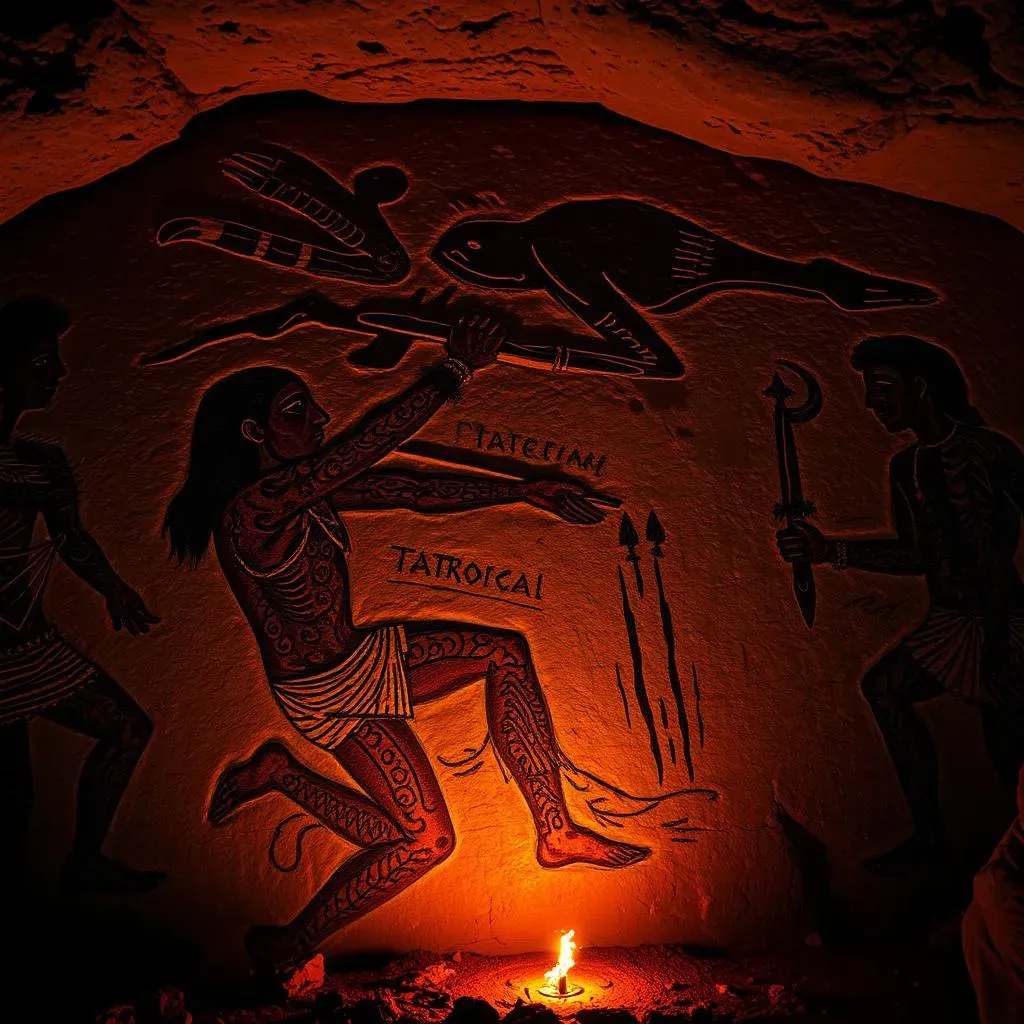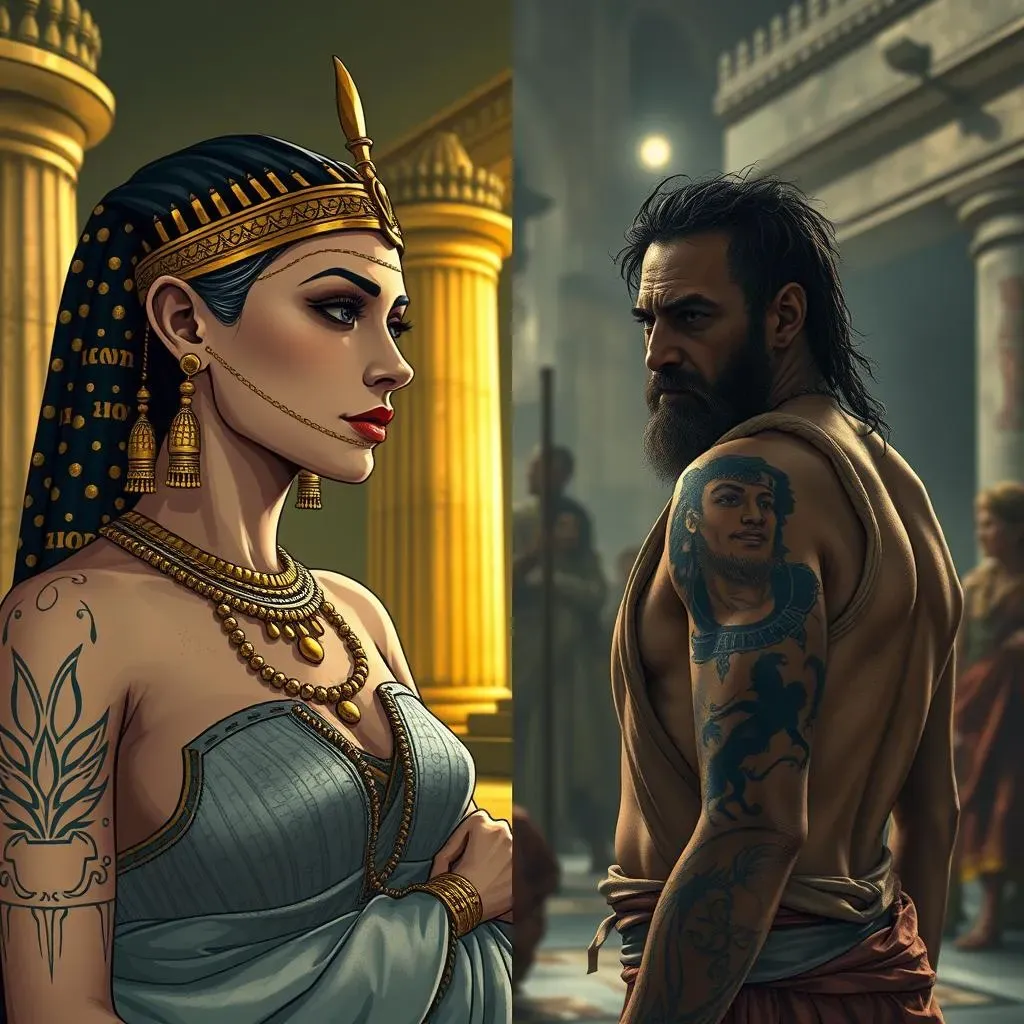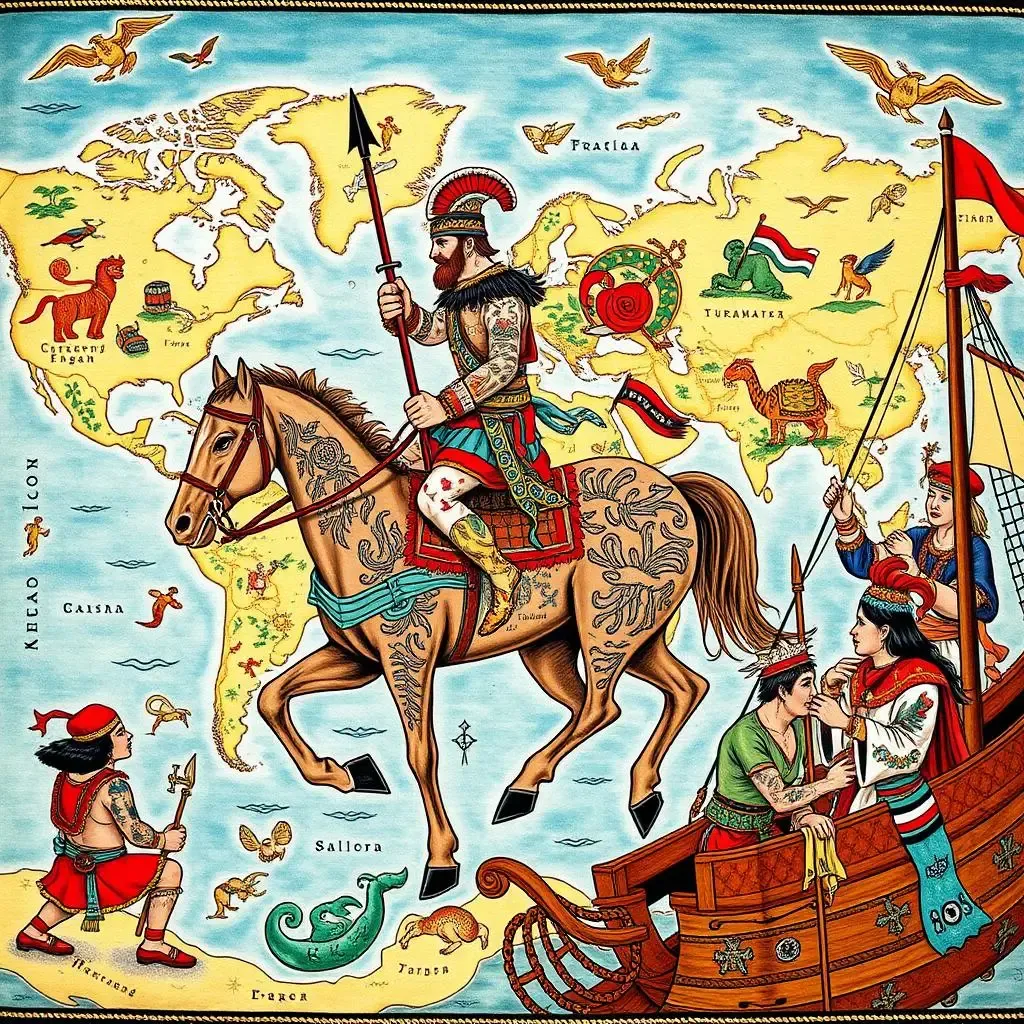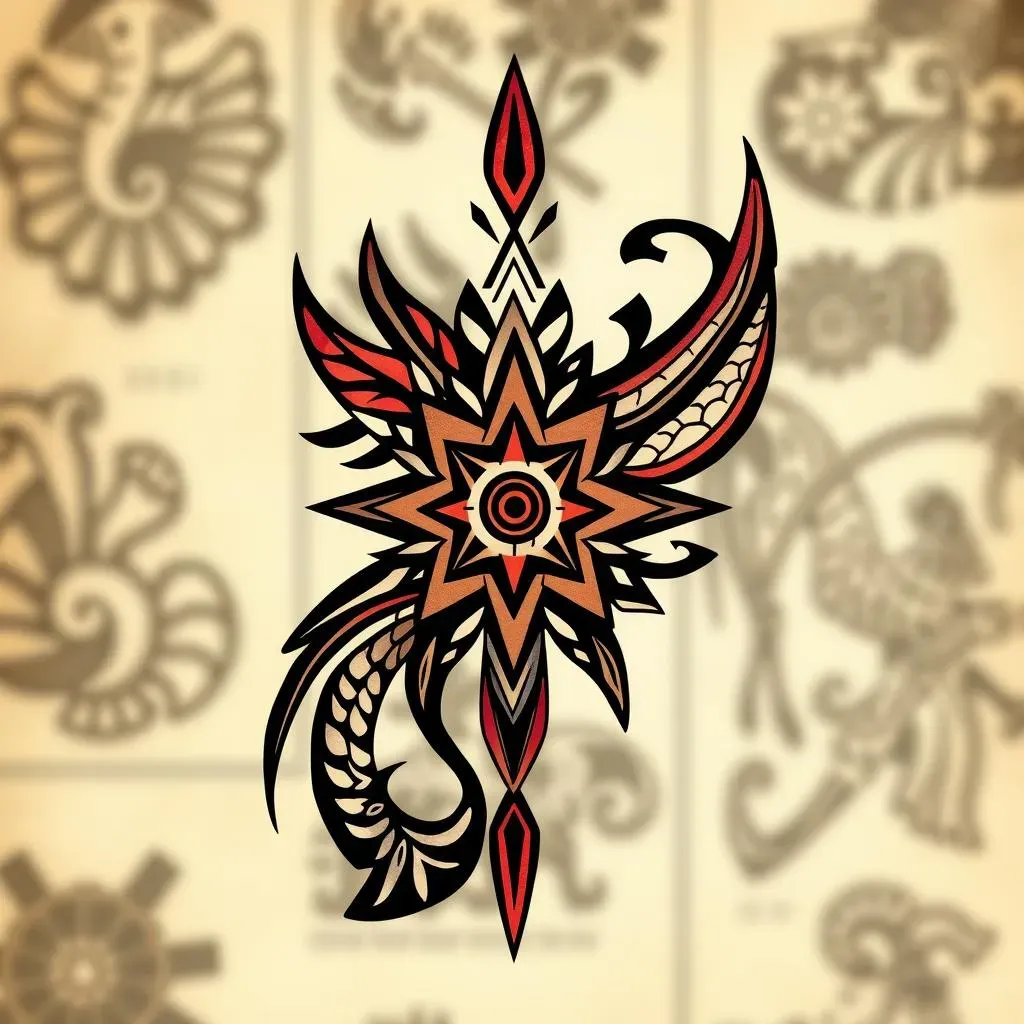Table of Contents
Tattoos, those indelible marks etched onto skin, have captivated humanity for millennia. But when tattoos were invented is a question that leads us on a fascinating journey through history, across continents, and into the very depths of human culture. From ancient mummies bearing intricate designs to modern-day masterpieces adorning bodies worldwide, the story of tattooing is as rich and complex as the art itself. Forget the idea of a single "eureka" moment; the origin of tattooing is a tangled web of independent invention and cultural exchange. In this article, we'll delve into the archaeological evidence, explore the practices of ancient civilizations, and trace the spread of tattooing across the globe. Prepare to uncover the surprising stories behind this ancient art form and discover how it has evolved from a ritualistic practice to a global phenomenon. We'll explore everything from Ötzi the Iceman's ancient markings to the resurgence of tattoo art in modern Western culture, revealing the enduring power and significance of tattoos throughout human history.
The Deep Roots of Tattooing: Exploring Ancient Origins
The Deep Roots of Tattooing: Exploring Ancient Origins
When trying to pinpoint The Deep Roots of Tattooing: Exploring Ancient Origins, it's tempting to search for a single "birthplace." But the evidence suggests a much more fascinating story: independent invention across various cultures. Think about it – early humans, experimenting with readily available materials like charcoal, plant dyes, and sharp tools. Scarification, a related practice of creating raised scars, likely played a role, as did ritualistic bloodletting. These practices, combined with a desire for self-expression and group identity, probably led to the development of tattooing in multiple locations around the world. Instead of a single origin, we should envision a web of innovation, with different cultures stumbling upon the art of tattooing independently, each adding their unique spin to the practice.
The real challenge isn't finding the *first* tattoo, but rather tracing how different cultures developed and utilized this art form. Archaeological discoveries provide tantalizing clues, offering glimpses into the beliefs and practices of our ancestors. Figurines with markings that resemble tattoos, dating back thousands of years, have been unearthed in various parts of the world. These artifacts suggest that tattooing, or at least body modification, was a widespread practice in prehistoric societies. But the most compelling evidence comes from the remarkable preservation of tattooed human remains, offering a direct window into the ancient world.
Ötzi the Iceman: A 5,300YearOld Tattooed Man and What He Tells Us About When Tattoos Were Invented
Ötzi the Iceman: A 5,300YearOld Tattooed Man and What He Tells Us About When Tattoos Were Invented
A Frozen Time Capsule
Imagine stumbling upon a perfectly preserved human body, frozen in ice for over five millennia. That's precisely what happened in 1991 when hikers in the Alps discovered Ötzi the Iceman. What makes Ötzi truly remarkable isn't just his age, but also the fact that he sports over 60 tattoos! These aren't elaborate works of art, but rather simple lines and dots strategically placed on his body. Their discovery revolutionized our understanding of when tattoos were invented and their purpose in ancient societies.
Ötzi's tattoos offer a unique glimpse into the Copper Age. The tattoos are located on his lower back, knees, and ankles. The placement of these tattoos has led some researchers to believe that they were used for therapeutic purposes, similar to acupuncture. This theory suggests that Ötzi may have been using tattoos to alleviate joint pain or other ailments. This discovery challenges the traditional view of tattoos as purely decorative or symbolic, suggesting that they may have also served a practical function in ancient times.
Soot Under the Skin: The Technique
How were these ancient tattoos applied? Analysis suggests that Ötzi's tattoos were created by making small incisions in the skin and then rubbing charcoal (soot) into the wounds. This rudimentary technique, while simple, would have been effective in creating permanent markings. The use of charcoal as a pigment is significant, as it was a readily available material for early humans. The process might be painful, but it shows the importance of tattoos in their culture.
Tattoo Location | Number of Tattoos | Possible Purpose |
|---|---|---|
Lower Back | Several lines | Pain relief |
Knees | Crosses | Pain relief |
Ankles | Lines | Pain relief |
More Than Just Decoration?
The big question is: why did Ötzi have these tattoos? While we can't know for sure, the prevailing theory is that they were related to pain management. Many of the tattoo locations correspond to acupuncture points used to treat back and joint pain. It's possible that Ötzi suffered from these ailments and used tattoos as a form of early medical treatment. This interpretation challenges the common perception of tattoos as purely decorative or symbolic, suggesting that they could also serve practical purposes.
This discovery adds a new layer to our understanding of when tattoos were invented, suggesting that their origins may be intertwined with early medical practices. The tattoos might have been used to mark social status, religious belief, or even to show the different stages of life. We can learn more about the culture of that time by studying Ötzi's tattoos. It is a reminder that tattoos have a long and complex history. It also shows the different meanings and functions that they have had.
Tattoos in Ancient Cultures: From Egyptian Mummies to Greek Slaves
Tattoos in Ancient Cultures: From Egyptian Mummies to Greek Slaves
Eternal Marks: Tattoos in Ancient Egypt
Let's hop over to ancient Egypt, where the story of tattoos in ancient cultures takes another fascinating turn! While Ötzi gives us a glimpse into Copper Age Europe, Egyptian mummies provide some of the earliest evidence of tattooing in the Middle East. These aren't just random markings; they offer insights into the beliefs and social structures of this powerful civilization. The tattoos in ancient Egypt weren't just skin deep. They were deeply connected to religious beliefs and social status.
Mummies, particularly female mummies, have been discovered with tattoos dating back thousands of years. These tattoos often depict symbols associated with fertility, protection, and religious devotion. For example, the mummy of Amunet, a priestess of the goddess Hathor, features intricate tattoos of dots, lines, and geometric patterns. These designs likely held symbolic meaning, perhaps intended to enhance her spiritual power or protect her in the afterlife. It's like they were carrying their prayers and beliefs right on their skin!
Stigma and Status: Tattoos in Ancient Greece and Rome
Now, let's travel to ancient Greece and Rome, where the perception of tattoos took a rather different turn. Unlike the Egyptians, who often associated tattoos with religious devotion and status, the Greeks and Romans primarily used tattoos to mark slaves, criminals, and prisoners of war. Ouch! It's a stark reminder that the meaning of tattoos can vary dramatically across cultures and time periods. In these societies, tattoos served as a form of social control, branding individuals as belonging to the margins of society. It was all about power and marking those who were considered "other."
The Romans adopted the practice of tattooing from the Greeks, using it to identify soldiers as well. While not as stigmatized as tattoos on slaves, this practice still highlights the use of tattoos as a tool for identification and control. Imagine being branded as a criminal or slave – it's a far cry from the self-expression we often associate with tattoos today! This darker side of tattoo history reminds us that the art form has been used for both empowerment and oppression throughout the ages. So, tattoos in ancient cultures, from the revered to the reviled, show just how much social context matters.
Culture | Use of Tattoos | Meaning/Purpose |
|---|---|---|
Ancient Egypt | Religious Symbols, Geometric Patterns | Protection, Fertility, Religious Devotion |
Ancient Greece | Marks on Slaves, Criminals, Prisoners | Identification, Social Control, Stigma |
Ancient Rome | Marks on Slaves, Criminals, Soldiers | Identification, Social Control |
The Global Spread: How Nomadic Groups Influenced When Tattoos Were Invented Worldwide
The Global Spread: How Nomadic Groups Influenced When Tattoos Were Invented Worldwide
Now, let's talk about The Global Spread: How Nomadic Groups Influenced When Tattoos Were Invented Worldwide. These groups weren't just wandering around aimlessly; they were cultural conduits, carrying traditions and techniques from one region to another. Think of the Scythians, for example, a nomadic group who roamed the steppes of Central Asia. Archaeological evidence reveals that they were heavily tattooed, with intricate designs adorning their bodies. These tattoos weren't just decorative; they likely signified social status, tribal affiliation, and even spiritual beliefs. As they migrated and interacted with other cultures, they shared their tattooing practices, influencing the art form in distant lands. It’s like a game of telephone, but with ink and skin instead of words!
Migration and trade routes acted as the highways of cultural exchange. As people moved, so did their ideas and customs. The Silk Road, for instance, facilitated the movement of goods and people between Asia and Europe, creating opportunities for different cultures to encounter each other's tattooing traditions. Sailors, too, played a crucial role in spreading the art of tattooing. As they traveled the globe, they picked up tattooing techniques from various cultures and introduced them to new audiences. This constant exchange of ideas and practices led to the diffusion of tattooing across continents, resulting in a rich tapestry of styles and meanings.
Nomadic Group/Traveler | Region | Influence on Tattooing |
|---|---|---|
Scythians | Central Asia | Spread of intricate tattoo designs signifying status and beliefs |
Silk Road Traders | Asia & Europe | Facilitated exchange of tattoo styles and techniques |
Sailors | Global | Introduction of tattooing to new cultures and audiences |
Modern Renaissance: The Resurgence of Tattoo Art and Honoring Its History
Modern Renaissance: The Resurgence of Tattoo Art and Honoring Its History
Fast forward to today, and tattooing is experiencing a modern renaissance! After facing periods of stigma and decline in Western cultures, tattoos have surged back into mainstream popularity. What was once seen as rebellious or taboo is now a widely accepted form of self-expression. This resurgence is fueled by a number of factors, including changing social attitudes, the rise of tattoo artists as respected artists, and the increasing visibility of tattoos in media and popular culture. It's a far cry from the days when tattoos were relegated to sailors and outlaws! Nowadays, you'll find people from all walks of life sporting ink, from doctors and lawyers to teachers and artists. The stigma has largely faded, replaced by a growing appreciation for the artistry and personal meaning behind tattoos.
One of the most exciting aspects of this modern renaissance is the growing respect for the history and cultural significance of tattooing. Artists and enthusiasts alike are delving into the traditions of indigenous cultures, learning about ancient techniques and designs, and incorporating them into their own work. This isn't just about copying; it's about honoring the roots of tattooing and ensuring that these traditions are preserved for future generations. It's a way of acknowledging the deep history of tattooing and celebrating its diverse cultural origins. It's about recognizing that tattoos aren't just about aesthetics; they're about storytelling, identity, and connection to the past.
Factor | Impact on Tattoo Renaissance |
|---|---|
Changing Social Attitudes | Increased acceptance and reduced stigma |
Rise of Tattoo Artists | Recognition of tattooing as a fine art form |
Visibility in Media | Normalization of tattoos in popular culture |
Cultural Appreciation | Honoring and preserving indigenous tattoo traditions |
The Enduring Legacy of Ink: A Timeless Art
From the frozen skin of Ötzi to the vibrant studios of today, the story of tattoos is a testament to human creativity, cultural exchange, and the enduring desire to mark ourselves with meaning. Pinpointing precisely when tattoos were invented remains an elusive quest, but the evidence clearly demonstrates that this art form has been an integral part of human expression for thousands of years. As we continue to explore and understand the rich history of tattooing, we gain a deeper appreciation for its power to connect us to the past, express our identities, and celebrate the human experience. The journey through tattoo history is far from over; new discoveries and evolving cultural perspectives will undoubtedly continue to shape our understanding of this timeless art for generations to come.